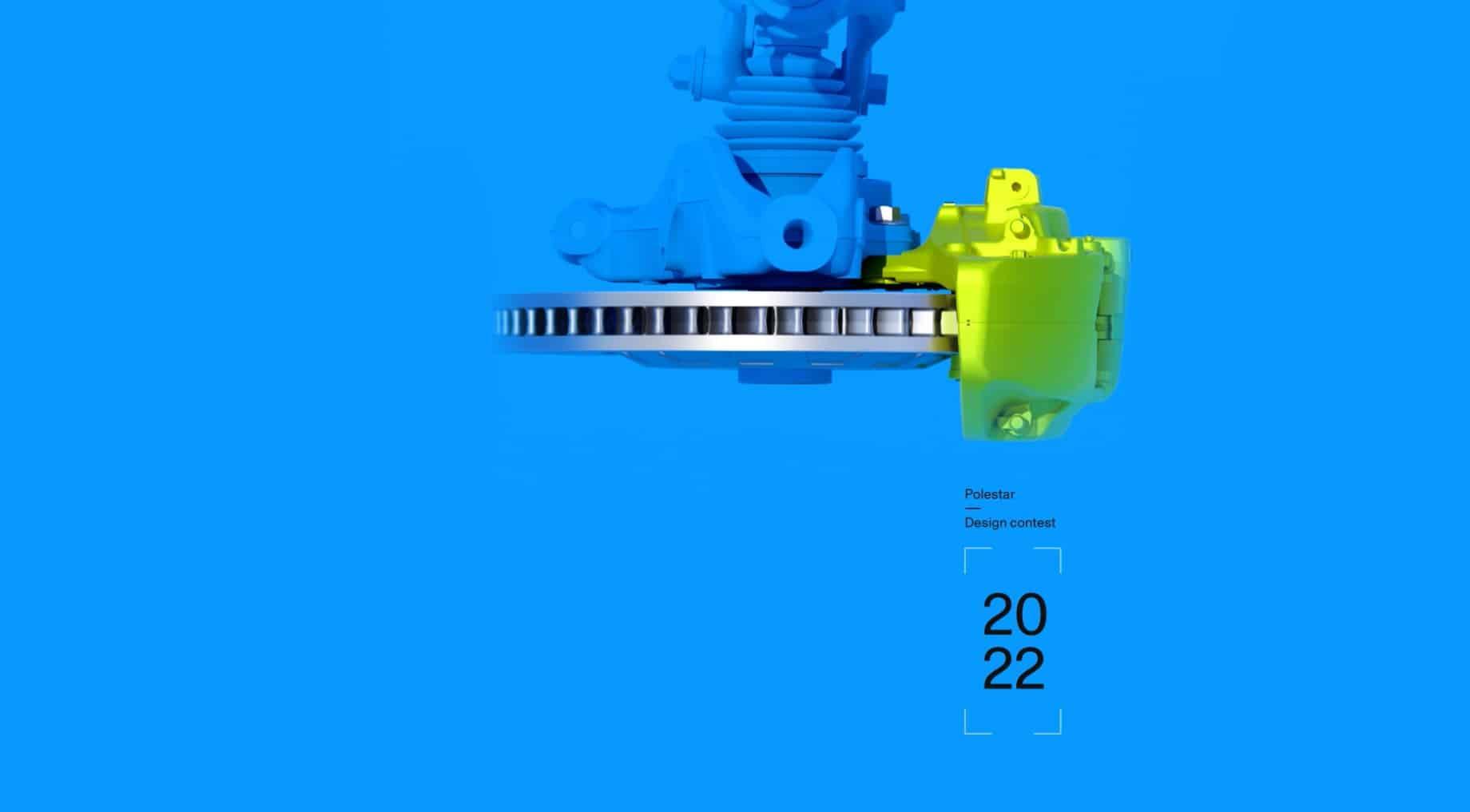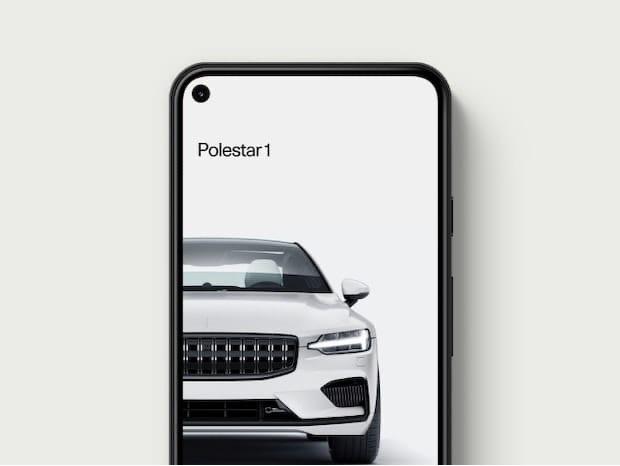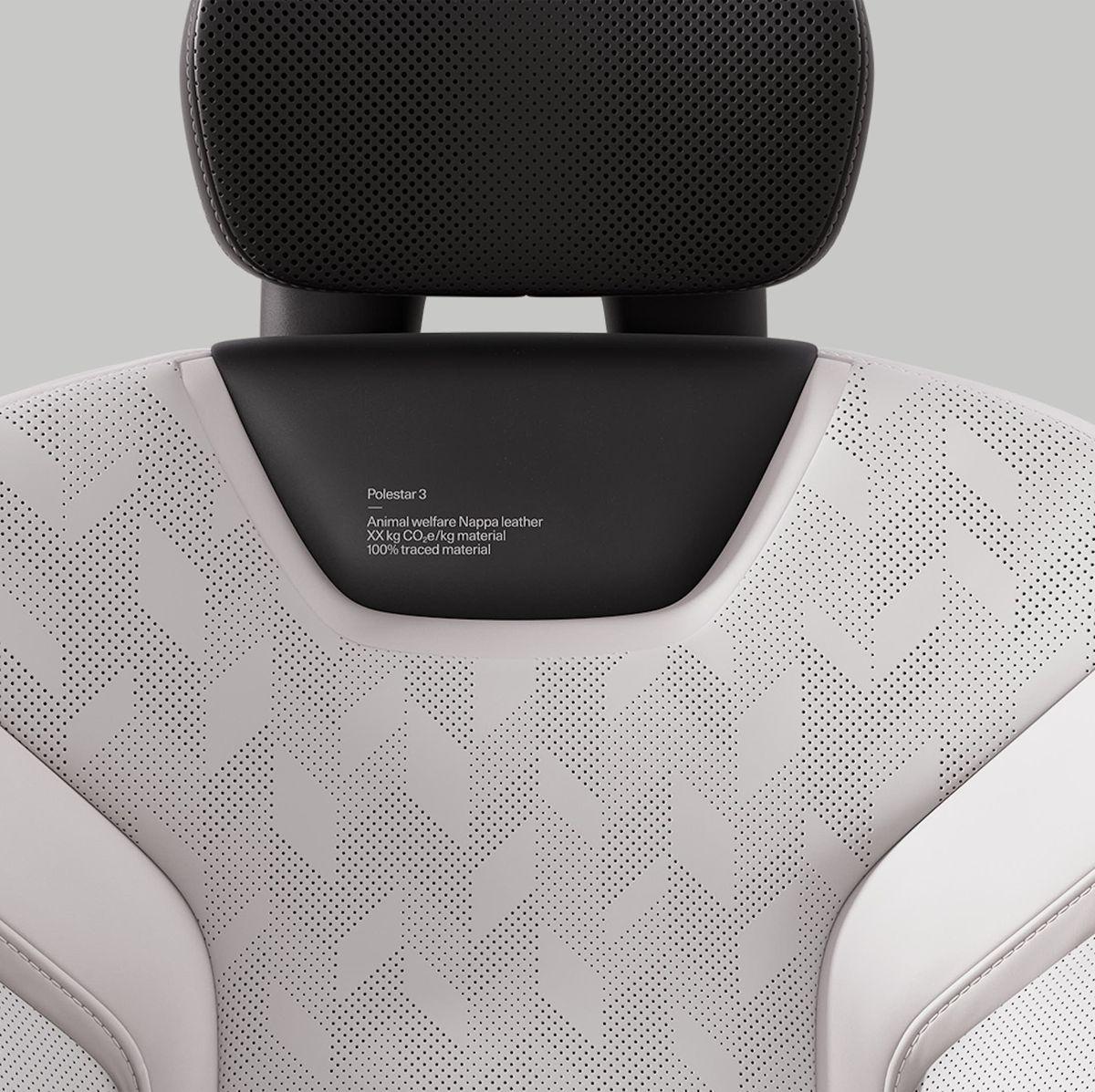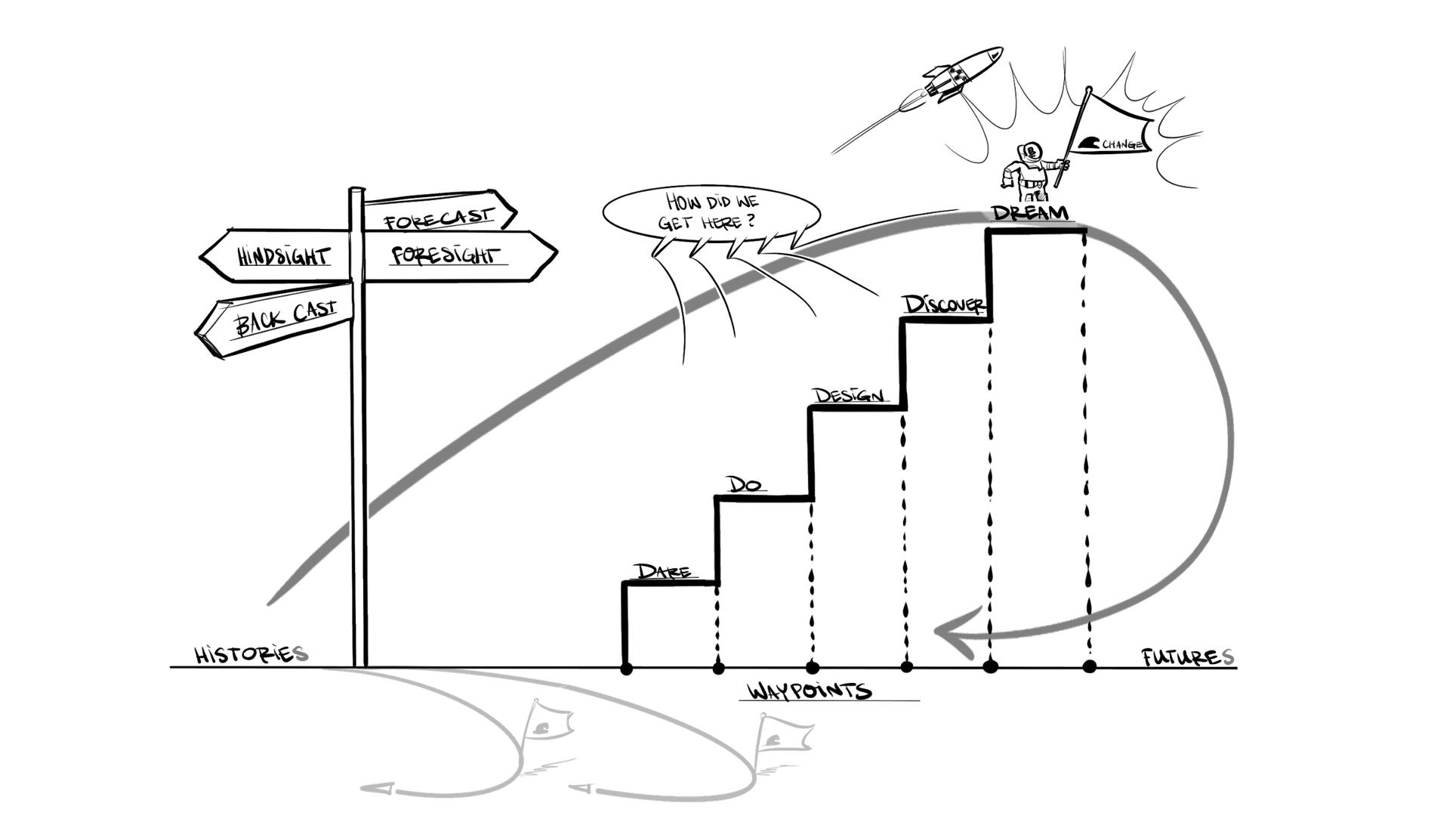SHIFTING GEAR

SPINNING-OFF THE NEXT GENERATION




A software defined concept (of car)

All automotive players are trying to get the best of both worlds – the scalable infrastructure of current combustion engines and the future growth of electric vehicles. Yet, all players have a very different strategy. Volvo, for example, decided to spin off their Polestar brand to kick off and accelerate its journey into electrification (while still benefiting from synergies by sharing Volvo's expertise and manufacturing capacity).
The question is, why spin off Polestar as a separate brand and organisation? Volvo itself was already determined to go fully electric. Also, performance and pricing are not a big differentiator between Volvo and Polestar. The rationale behind establishing a spin-off is found beyond brand, powertrain and market segmentation; it's all about the complexity of internal processes and the ecosystem constraints of a traditional manufacturing industry. As stated in Polestar's mission, 'We have no legacy, no ties to the past; we are free to find the right way.'
The main industry challenge is to transform a company, one which has been so focussed on making the combustion engine work, into a very different direction. Making an electronic vehicle is not simply putting a computer on wheels. It's a much more holistic concept that goes beyond the current state of one technology. It is still, for mankind, an amazing experience that you can actually accelerate and transport yourself faster than your own feet can carry you. And now, with autonomous driving just around the corner, the future of automotive includes a shift from focusing on engineering and scale towards building a real customer experience and business. This requires an entirely new organisational design and culture – and is a good reason to spin off Polestar from Volvo!
As a spin-off, Polestar, now free to operate without any constraint of an internal or external legacy (e.g., partnership commitments or standard channels), can rethink everything about how a car company is organised to become much faster in development and lean decision-making. This requires an entirely new organisational design and culture, one leaning more on Polestar's racing team heritage and working in a very agile and multi-disciplinary way, to constantly boost performance and driver experience.
In short, Polestar is about creating the freedom of a start-up with the benefits of an established player.
What part of your business could you hypothetically spin off?
What would be the biggest change for the spin-off company?
In what way could a spin-off benefit from the best of both worlds?
FIRST CLIMATE NEUTRAL POLESTAR
O2-CONCEPT WILL ENTER PRODUCTION AS THE POLESTAR 6
EXPECTED LAUNCH CONCEPT CAR, POLESTAR 5
POLESTAR ANNOUNCED MORE MAINSTREAM 100% ELECTRIC CAR, THE POLESTAR 2.
ANNOUNCEMENT MODEL 3,4,5 AND 6
AS STANDALONE ELECTRIC CAR BRAND
OF FIRST POLESTAR 1, A LUXURIOUS 2+2 COUPÉ
A
Polestar, established in 1996 by Flash/Polestar Racing, was acquired in 2015 by Volvo Cars, which itself has been owned by the Chinese company Geely since 2010. Polestar is the Swedish electric performance car brand determined to improve society by using design and technology to accelerate the shift to sustainable mobility. Headquartered in Gothenburg, Sweden, its cars are available online in 27 markets globally across North America, Europe and Asia Pacific. The company plans to create a truly climate-neutral production car, without offsetting, by 2030. Lifetime zero emissions in production and usage requires a new way of thinking as well as becoming more technology Agnostic.

POLESTAR CARS SOLD
SENSORS TO CHECK THE DRIVER AND THE ENVIRONMENT
MOVING PARTS VS 2000 IN A DIESEL ENGINE
50 10X
EMPLOYEES
GROWTH IN 2030 2.5BIL
GLOBAL REVENEU 2022
BACKCASTING MOBILITY
From product to platform
2 4
SHIFTING GEARS
Design & digital only approach
3
1 5
ASSET-LIGHT & AGILE
A new car requires a new kind of company
CUSTOMER SUCCESS
The consumer is the future brand
PLEDGE ON ZERO
It’s not a concept, but a statement
For a 100%-electric car brand, Polestar's initial launch, a hybrid car instead of a fully electric one, was a little bit unorthodox. But Polestar views hybrid as also part of the electric journey, and they wanted to get the brand and team out there. As Polestar CEO Ingelhart says, 'A new brand is not just a marketing exercise where you do a perfect plan from A to Z. It is a living thing. It has its history, how it all grew. We actually don't do everything by the textbook to give it a little bit more room to breathe, and at the end decided, it is absolutely in line with what the company philosophy is about and that's why we felt at the end of the day, electric will be a certain period of Polestar. Let's face it, in 50, 60, 70 years, we will still be Polestar, but technology might have changed again.' Polestar now has a fully electric line-up as a global EV-pure player alongside, for example, Tesla.

As a start-up within the electric vehicle realm, Polestar needs to pick its battles. Strategic choices based on the Polestar vision: 'Net zero progressive performance.' For example, producing a fully autonomous vehicle that functions like a robo-taxi is better left to other companies. For Polestar, pilot assist and autonomous driving is probably of most use on a highway, when you are commuting to work and you really would like to put the car into auto-drive and do something else like reading or preparing for a meeting or just relaxing. Such strategic choices have design implications, for example, the focus on higher driving speed and tailoring the turn, the high demand for a immediately impact the aerodynamic



Setting a new standard requires a clean slate
Polestar's basic models are already very well-dressed with standard 'options' when sold. This standardisation provides the customer with the fastest delivery and best experience, and likewise prevents costly customisation. The new all-electric SPA (Scalable Product Architecture) technology platform, shared with Volvo, takes efficiency to a whole other level. 'It's like a guitar: two different musicians can create completely different music with the same instrument,' the Polestar CEO has pointed out.
This new platform approach drives economies of scale, but moreover its modularity enables the possibility to upgrade the car's software and hardware during its lifecycle (e.g., changing the core processor).
Polestar has been more open about its future models than many of its peers and rivals. The new models won't steal sales from existing models as each of the new releases focuses on a different kind of usage. The upcoming Polestar 3, 4 & 5 will help the company in its aspiration to grow 10-fold by 2025.


When you clean-slate your product portfolio, what would be the most simplistic line-up?
What would be the best and toughest choices in standardizing your product portfolio?
A tough challenge: Like the concept cars of Polestar, what would a future concept of your product look like?

Software will define many of the new, upcoming cars. These vehicles are connected, and every few weeks the system automatically downloads a new software package with all new features. As sensors get better and better, it'll be easier and easier for the car to drive safely on its own –autonomous driving will become a standard. This will reflect the transformation of the car from a highly electromechanical terminal to an intelligent and dynamic mobile electronic agent that can be continuously upgraded. With this in mind, these new vehicles will be preembedded with advanced hardware.
The functions and values of the hardware will be gradually activated and enhanced throughout the life cycle. This will require the ability to change the hardware to prevent our needing a new car like we need a new smartphone. The 'stack' configuration of the car will define the vehicle's capabilities in driving, safety and experience. Hence, it's a car software-defined vehicle.
With the intent to build an extensive and lasting relationship with both the car as well as the drivers, Polestar has defined itself as a purely digital brand since its inception, from adaptive screens in the showroom to the Polestar app. The brand is, therefore, digitalfirst – or maybe even mobile-first. For example, you can only configure and buy the car online.
The car and the driver (via the Polestar Explore app) are in continuous connection, which supports performance, driver safety and convenience. An example here is the use of your smartphone (and app) as the digital key to the car. As you approach the car, the door unlocks; but even better, you can share the digital key with your friends if you want to share your car. Why? Because right now, 96% of the time cars are unused!
Many of the new settings, updates or features are conveyed to the car over the air (OTA), and users are allowed to try, buy or subscribe to certain upgrades. Just like every dynamic website, every car will be personalised due to the software options installed. Such a seamless end-to-end digital customer experience is the future business model of the automotive industry, if not the mobility industry in general.
Polestar has chosen to run Android Auto for the entire centre stack. An oftenheard question is: Why give up that part of the experience (and data!) to Google?
As cars slowly head toward self-driving capability, who should own the maps and navigation information? For Polestar, the answer is clear: 'Let's face it, on my Apple iPhone, I have Google Maps, and it's not that I suddenly say, "Oh, but now it is not an iPhone anymore".' Polestar realises that they can't become a champion in every field by themselves – and that to ensure that every aspect of the car offers the best Polestar experience, partnerships are essential.

It's all about customer benefit. By entering into a strategic alliance with companies like NVIDIA and Google, Polestar can integrate all the best-inclass services into one experience. For example, SmartEye keeps an eye on the driver's attention, feeding Zenseact's complex AI driver assistance onto NVDIA's system-on-chip, while Luminar Lidar scans the environment, the kids stream games via the Geforce chipset, and the car navigates with Android Auto and Google Maps. All the partnerships Polestar tries to formulate are a win-win.

What would a 100% digital service look like for you?
What would a mobile-first or mobile-only service look like for you?
In what field(s) could you use partnerships to become even better together?
Polestar knows that ideas alone are not enough to achieve the best... you have to get involved! According to Polestar COO Dennis Nobelius, 'When you compete with the best you have to constantly adapt, and to adapt you have to learn what can be done better. From Polestar HQ to the factory plants, everything is set up in such a way that we are flexible. We want our cars to be delivered in less than two weeks [from purchase].' A key decision to achieve this goal was the standardisation of the product by equipping the basic models with upmarket features to reduce the number of variation.
It also requires having direct feedback loops between users and the engineering team, and vice versa. Traditionally, a car has a mid-cycle update based on lessons learned, although the average Polestar driver has already received hundreds of updates over-theair (OTA). For example, a new method for boosting battery performance by 100kw took only six weeks from the engineering table to being installed on all cars out there.
Just like with the race teams of the early days at Polestar, multi-disciplinary teams need to work together to continuously improve the car performance and driver experience. The company strives to continuously mirror the outside world and to adapt to social and technological changes (such as the interpretation of hierarchy or the implementation of digitisation). Any symbols inferring that one division or function is more important than the other is not an option in a 21st-century business.
This requires many adaptations, particularly in comparison to the Volvo organisation, including having CEOs working on the floor like everyone else, working with forecasts instead of competing budget rounds, and replacing complex org charts with a flat organisation where, for example, the data scientists report directly to the board. .




Polestar embraces the fact that it needs to be the change and that it has to also encourage, support and shape the change. Leading by example is great, but only if people follow. With this in mind, Polestar has been using the Polestar Design Community (PDC) to bring together student and professional designers from diverse backgrounds and locations to see what a more-sustainable electric future could look like. The design challenges of this lively Instagrambased community provoke Polestar to continuously have an open mind as the firm nurtures, mentors and coaches winning ideas into prototypes.
Polestar currently employs about 1,000 people, yet thousands of engineers and workers work on the Polestar products. Service contracts are used so as to remain agile and maintain a type of asset-light approach. This implies that Polestar embraces many strategic partnerships, with all kinds of industryleading specialists, in the many different fields involved in making an electric vehicle.
How could you start to participate with an external community?
What are symbols of unproductive hierarchy in your culture or environment?


What would an asset light approach look like in your organisation?



Polestar started in the premium segment of a market with a very demanding customer base. The same goes for those who bought a Polestar 2, often an EV enthusiast. Serving these very demanding customer segments trained the organisation well. With customer desires and experience at the forefront of their business, Polestar decided to only sell direct to the consumer and, as a result, to insource all customer services.
At Polestar, manufacturing is now a contract business, and customer care is a key internal department. This highlights the shift in the organisation from a purely engineering focus towards more of a design mentality. Being internally integrated, the team can provide customers with faster access to information, solutions and services, no matter which department is actually responsible. Customer care is the primary point of contact, and owns the feedback loop between product, sales and support, and learns from every interaction
Polestar Spaces (showrooms) are carefully designed and unique retail environments. Never located on the outskirts of town, they are always down on the main shopping street. In these spaces, you can get to know the cars at your own pace. No salespeople. No pressure. Only non-commissioned product experts available upon request to answer any questions. You can use the car information, the Polestar Explore app, to place a (pre)order and, subsequently, make the choice between a subscription or outright purchase – all done online. The app and space are important touchpoints in the Polestar brand experience and customer journey.
In the car industry, the prices are called 'list prices', which indicates that the given price could be negotiable. Polestar sees this as not transparent, so the price on the website or in the store is the same for everybody.



By having presence on mainstream and building lasting relations also requires local adaption to provide the best user experience. Each of the internal Customer Experience (CX) teams is instructed by the mantra 'Do as the locals do’. Listen and adapt. The team can do so because of the central place in the Polestar organisation, the local presence of teams ánd the global standardization with tools like Salesforce and Genesis Cloud services.

Polestar does not define itself as an electric car company. Instead, the brand is a set of 'core principles' about what the concept of what 'a car' is. With the underlying technologies replaceable over time, customer relations are becoming the true future value of everything. Which is why Polestar puts the customer experience at the centre of their business strategy. The aim is to enhance all business models through connectivity, as Polestar is extremely interested in building lasting relationships and having a two-way exchange of information. For example, as a Polestar owner you can download certain software features for your car, test them, and then decide whether you would like to keep the settings or not. This provides the user with an experience-based decision, and Polestar with much-needed, rapid customer feedback loops.
As autonomous-driving technology becomes more prevalent, the interior will play a much larger role in differentiating brand identities. Consumers will focus more on features such as digital assistants, beautiful graphic displays, streaming and other digital services. This implies a shift from a typical engineering mindset towards more of a design-mentality. Especially when looking a horizon further when car ownership will be replaced by ‘hailing a car’. That shift is turning vehicles into living spaces, where passengers can enjoy what’s important to them — whether it be work or play — rather than the stress of driving.

What if your product moves from a model of ownership to a (shared) service?
What would ultimate success for your customer look like?
How could your customers become more in the lead of their own journey?
In what way can you better listen and adapt to specific (niche) user groups?


Cars determined urban design, image and experience. So a new kind of car also means we need to form a new vision of public space: a new kind of car will change society where its users live and work, as well as how cities are built. Everything is changing because of this technology, and Polestar wants to take on full responsibility and to be part of that change. Thus, sustainability has been defined as key driver in the design and engineering philosophy of Polestar: to make cars that contain more recycled material, last longer, and are utilised to a higher degree.


A sustainable future implies that 'performance' has to be redefined and embodied without compromise. That goes for the Polestar company as well as the product. Polestar is a small company that sees itself as part of climate solutions, so it needs to grow to make more positive impact. The design challenge is, therefore, to decouple that growth from negative social or environmental impact. In other words, a new form of performance that moves away from high consumption. Pure progressive performance.
In 2021, Polestar announced 'The 0 Project': the target to release a so-called climateneutral vehicle by 2030. A car that not only doesn't release any CO2 while in use, but also throughout its lifetime. To achieve that moonshot goal, supply-chain sustainability needs to be seen as a must, not as an option. All parts of Polestar's supply chain must reach the proper targets without resorting to offsetting by tree-planting and relying on the CO2 intake of crops. For Project 0 to be more than just a big, hairy, audacious goal, the car will have to leave the factory gates with a zero-carbon footprint.
Polestar, aiming to set a much-needed new standard in the industry, is completely transparent about their methods and progress towards their climate-neutral future. They go so far upstream as to include everything that is needed to make a car: every single step along the way from the mining field to the port to when the car is delivered to the customer, and all the way up to the product's end-of-life.
A framework of 100+ initiatives, divided into a short to long-term roadmap, has been implemented to make Project 0 a reality. From ethical work principles to supply chain traceability and sustainability labelling, transparency is a key enabler to making real world progress. Polestar wants to make that possible via blockchain-based data on all materials throughout its entire supply chain. Polestar started by assessing scarce materials – for example, cobalt can now be traced from ethical mines to the factory gate using blockchain. More risk materials are set to follow. The new Precept model is being hailed for its use of recycled aluminium as well as its use of 100% recycled plastic for the car's interiors.
A car is a long-lasting consumer good. You will replace your computer and your telephone far more often than your car. Designing a product for forever is very difficult. It is also really difficult to keep a system open enough that you can upgrade it forever. At some point, it just doesn't make economic sense anymore, because it would be better to simply rebuild the whole thing. When striving for more longevity, one major step is that the electronics and software in the car need to become updateable so as to make sure that the car doesn't 'feel' old too early when the mechanics and everything else are still working very well.
Can you create more transparency on the effects of your product, service and changes?
In what way could you possibly create longer-lasting products?
Do you have a pledge for 2030?
What would your (personal) pledge sound like?
Thomas Ingenlath CEO PolestarFormer Chief Design Officer Volvo Cars

We need companies that are courageous, innovative and develop solutions that are up to the huge challenges we are facing!
.
Backcasting is a method used in problem-solving, scenario planning, and change management. It starts with a desired future scenario and works backwards to identify the steps required to achieve that future state. The process involves defining a future vision or goal, and then identifying the necessary conditions, policies, and actions needed to reach that goal.
In contrast to forecasting, which looks at past trends to extrapolate a future, backcasting starts with a future state and works to identify the specific actions needed today to increase the chance of that future vision taking effect. By focusing on creating a preferred future –instead of adapting to an uncertain future – organisations can become more proactive and effective in achieving their goals.
Often we combine backcasting with appreciative inquiry, an approach that focuses on identifying and building upon an organisation's strengths instead of solely addressing its risks and weaknesses. It is a collaborative and participatory approach that involves many stakeholders in the organisation. The appreciative inquiry process typically involves four stages:
Dream: Imagine and articulate an ideal future state. This requires developing a shared vision and aspiration for the future.
Discover: Explore what experiences and changes have worked well in the past and how that might contribute to the ideal future success.
Design: Develop a plan for achieving the ideal future state by defining specific initiatives that will help the organisation to realise the discovered changes
Do: Takes action to implement the first steps for the new design, and define key decisions that need to be made today to start in this new direction.
The appreciative inquiry approach is based on the belief that organisations are more likely to be successful when they focus on what is working well and build upon those positive experiences. This allows organisations to create a more-energising environment for change, and to achieve more meaningful and sustainable results.

1. Define your future vision, dream, moonshot or big hairy audacious goal (BHAG).
2. Ask yourself, 'How did we get here?'
3. Walk backwards, repeating the question, from 'Dream' to 'Discover' to 'Design' to 'Do'.

4. Finally, define what dilemma, decision or dare is holding you back.
For an explanation and some facilitator notes on how to use this model in your team, check our short course on Backcasting at futuresacademy.nl
PATTERN: SPIN-OFFSpin-off is a design principle that involves creating a separate entity from an existing organisation or project to pursue a new direction or opportunity. This new entity is often formed to pursue a specific goal or product that is different from the main focus of the existing organisation.
The idea behind spin-offs is to allow the new entity to operate with more autonomy and flexibility, without being constrained by the existing organisation's structure or culture. By creating a separate entity, the new project can operate more independently, with its own resources, goals, and strategy.
This can be beneficial for both the parent company and the new entity, as the parent company can realise value from divesting non-core businesses, while the new entity can operate with greater focus and flexibility, and potentially attract new investors.
The spin-off can also be a valuable design principle for organisations that want to explore new areas of innovation, expand into new markets, or pursue new business opportunities. It can help to create a more focused and agile organisation that is better equipped to pursue specific goals.
Overall, spin-off innovation allows companies to leverage existing ideas and components to create radically new and innovative products.
These worksheets offer a summary of Polestar's smart move towards 'opening up for cocreation'. On the backside of the worksheets, you will find the questions you can ask yourself or your team to challenge your own perspectives.
The worksheet is a summary of the Polestar smart move on ‘opening up for cocreation’. On the backside of the worksheet you will find the questions you can ask yourself or your team to challenge your own perspectives.




Patagonia started as cashcow to provide funding for the high quality gear it was making. With the outdoor DNA and extreme focus on craftsmanship it became thé example of sustainable business, advertising nót to buy and starting a non-extractive ownership model.

Nike made an important strategic turn to ‘double down on digital and direct to consumer’. This required a completely different approach towards innovation, distribution and communication to relate to the thousands of subgroups and niches where everybody is an athlete.
‘Buy now pay later’, a business model that was said to be doomed to fail. Klarna embedded this backend payment services behind many check-outs of online stores. And then it turned the tables to become one of the largest E-commerce frónt-ends for the Insta-generation.

The Skype cofounder views all business through the lens of uniteconomics: when an element reaches near zero additional cost, digitally scale and disrupt an entire industry. His most recent scaleup is forcing the furniture industry into a circular service model.

A former game-company turned itself into the largest teamcommunication platform in the world. Slack approached the future of work as a team-of-teams and thus build a platform and organization to turn everything into a dynamic conversation.

The Futures Academy is a research collective challenging organizations, teams and individuals o grow a Future-Ready mindset, skillset and toolset,


Smart Moves is a monthly publication intended to challenge your thinking and way of work so that you can become more future ready.
Each issue spotlights several next practices from a company already pioneering with its purpose, organizational design and future business models.
Challenge yourself and your team with the included thought-provoking questions –because before you can make a difference, you need to see the difference.


Research, artwork and texts by Arjan Postma, Jeroen Boschma, Bryin Abraham, J´órgen van der Sloot & Jefta Bade
Special thanks to Polestar especially Thomas Ingenlath and Dennis Nobelius for their inspiration.
All images are courtesy to Polestar, For more information contact smartmoves@FuturesAcademy.nl www.Futuresacademy.nl
The Futures Academy is a research collective challenging organizations, teams and individuals to grow a Future-Ready mindset, skillset and toolset, anticipating 21st century transitions, and igniting positive impact, together.

We are a research collective challenging organizations, teams and individuals to grow a Futures-Ready mindset, skillset and toolset, anticipating 21st century transitions, and igniting positive impact, together.
SEE THE DIFFERENCE TO MAKE A DIFFERENCE
